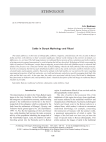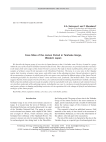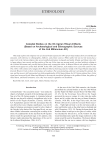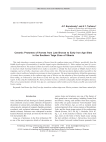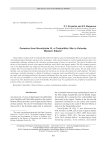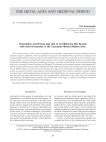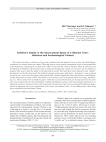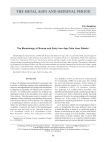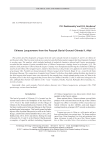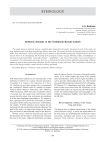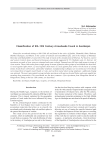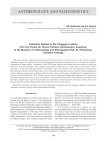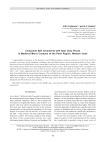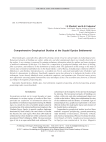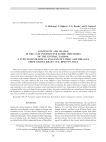Статьи журнала - Archaeology, Ethnology & Anthropology of Eurasia
Все статьи: 351
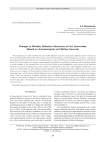
Статья научная
This study focuses on the southern line of wooden defensive structures (palisade, platform, and two towers) at Fort Umrevinsky (first third of the 18th century), based on the findings of archaeological excavations. Continuous development in this borderline fort are reconstructed over a period of 30 years. Initially, during the era of Peter the Great, Fort Umrevinsky was a regular, subrectangular fortification, enclosed by a palisade, and somewhat similar to a field redoubt. A few decades later, two towers were built on pile foundations at the corners of the palisade enclosure on the fort’s southern face. One of them was subquadratic, the other subrectangular in plan view. As a result, Fort Umrevinsky became a bastion-type fortification. The strengthening of the southern face was motivated by the presence of gates in the palisade wall between the towers, by the proximity of transportation routes (roads and waterways), and by the fact that fortifications were arranged parallel to the borderline. Fortification changes in the 1730s were caused by a number of factors. These included the spread of European fortification principles to Siberia, the political situation in southwestern Siberia, and the beginning of large-scale military engineering works in the region. The southern line of wooden fortifications at Fort Umrevinsky helps to estimate the number of towers there.
Бесплатно
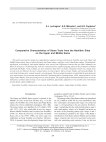
Comparative characteristics of stone tools from the Neolithic sites on the Upper and Middle Kama
Статья
Бесплатно
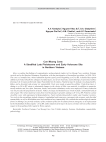
Con moong cave: a stratified late pleistocene and early holocene site in northern vietnam
Статья
Here, we outline the fi ndings of comprehensive archaeological studies in Con Moong Cave, northern Vietnam, carried out by the Russian-Vietnamese Expedition, with the participation of Australian specialists, in 2010–2014. The cave is a stratifi ed site, whose habitation deposits span a period beginning ca 42 ka BP. A detailed description of fi nds is provided. Diachronic changes in artifact types, use of raw materials, and technology are presented. Lithics from layers K–S represent the Early Upper Paleolithic Sơn Vi culture. Finds from layer K include core-shaped debris, fl akes, and a discoidal side-scraper (or sumatralith). Tools were made on quartzite pebbles. Finds from layer L, dating to ca 36 ka BP, attest to substantial changes in the choice of lithic raw material: in addition to quartzite, mostly andesite and, less often, limestone, basalt, and certain sedimentary rocks were employed. Primary reduction was not preceded by preparation of nuclei. Flakes are large and medium-sized. Tools include a sumatralith and an end-scraper. The richest material comes from Con Moong layers Q and S, dating to 26–21 ka BP. Preforms consist of pebble cores with unprepared striking platforms. Nuclei include fl at-parallel, radial, and irregular varieties. New tools in the assemblage include choppers, longitudinal and transverse convergent side-scrapers, and discoidal sumatraliths, as well as Hoabinhian axes and a unilateral axe (sumatralith). We conclude that archaeological remains from Con Moong Cave provide evidence of the evolution of the Sơn Vi culture from its emergence to its replacement by the Hoabinhian Technocomplex ~25 ka BP. Lithic industries from layers K and L correlate with one of the earliest stages in the peopling of this region by Homo sapiens.
Бесплатно
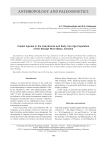
Cranial injuries in the late Bronze and early iron age population of the Shnogh river basin, Armenia
Статья обзорная
Бесплатно
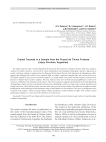
Cranial traumas in a sample from the Pucar'a de Tilcara fortress (Jujuy province, Argentina)
Статья
We analyze injuries in the cranial sample from the Pucará de Tilcara fortress, dating to the time of the Inca conquest. Analysis of violence markers, carried out by visual examination and computed tomography, and the comparison of results with those relating to samples from the Regional Development Period of the Quebrada de Humahuaca valley, suggest that although the violence level remained high, its nature could have changed after the arrival of the Inca. The female sample reveals just two perimortal injuries, no trophy skulls were found, and the frequency of nasal bone fractures is higher than in earlier samples. This may indicate lower level of between-group fi ghting for control over resources, and higher risk of interpersonal violence. The observed pattern suggests that having arrived in the Quebrada de Humahuaca region, the Inca eased political tension by establishing control over trade routes and the distribution of arable land areas, which had previously been the main cause of local armed clashes. The infl uence of artifi cial cranial modifi cations on the pathological and traumatic status of individuals was also analyzed. Two types of modifi cation were recorded in the sample—fronto-occipital tabular oblique and fronto-occipital tabular straight. None of them caused pathological changes or a decrease in the thickness of cranial bones.
Бесплатно

